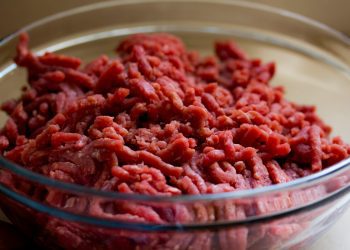The Future of Food: The Rise of Cultivated Meat
Introduction
The food industry is experiencing a profound transformation, and one of the most exciting developments is the rise of cultivated meat. Cultured meat, also known as lab-grown or cell-based meat, represents the future of food production, combining sustainability, technology, and innovation. This market is growing at a rapid pace, with a compound annual growth rate (CAGR) of 19.06% forecasted from 2024 to 2031. As global awareness around environmental sustainability, animal welfare, and food security rises, cultivated meat is gaining momentum as a viable alternative to traditional livestock-based meat.
In this blog post, we will explore the factors driving the growth of the cultivated meat market, the technological advancements behind it, the challenges it faces, and how it holds the potential to reshape our food systems. From consumer preferences to business opportunities, the rise of cultivated meat is more than just a trend—it’s a revolution in the way we think about food production.
As the market expands, cultured meat presents a new opportunity for businesses and consumers alike. While challenges remain, the potential for positive change in the food industry is enormous. The cultured meat movement is paving the way for a more sustainable and ethical future in food production.
Market Overview
The Growing Cultivated Meat Market
In recent years, the cultivated meat market has been gaining significant traction. The market was valued at USD 67.3 million in 2022, and by 2023, it is projected to grow to USD 107 million. By 2031, experts predict the market will reach an astonishing USD 432.17 million. This rapid growth highlights the increasing demand for alternatives to traditional meat, fueled by both consumer preferences and technological advancements.
This shift in the food industry is not just about new products but about reshaping the entire meat production process. Cultured meat offers a more efficient, ethical, and environmentally friendly way of producing protein, which has major implications for the future of food security and sustainability.

Why the Market is Growing
There are several key factors driving the growth of the cultivated meat market. First and foremost is the increasing demand for sustainable food production. The traditional livestock industry is resource-intensive, requiring vast amounts of water, land, and feed, and it contributes significantly to greenhouse gas emissions. In contrast, cultured meat production has a much lower environmental footprint.
Secondly, advancements in biotechnology and cellular agriculture have made it possible to produce meat in a controlled environment, making it a viable alternative to raising animals for food. As these technologies continue to improve and scale, the price of cultivated meat is expected to decrease, making it more accessible to a broader audience.
Future Projections
With the ongoing advancements in cellular agriculture and growing investment from the private sector, the cultured meat industry is poised for rapid expansion. The rise of plant-based and cultivated alternatives is expected to significantly disrupt traditional food production systems, offering an opportunity to meet the increasing global demand for protein while minimizing environmental harm.
Consumer Preferences
Shifting Attitudes Towards Meat Consumption
One of the major driving forces behind the rise of cultivated meat is changing consumer preferences. With more people becoming aware of the environmental and ethical issues related to conventional meat production, many are turning to plant-based and cultured alternatives. In particular, millennials and Gen Z are more conscious of the environmental impact of their food choices, seeking options that align with their values of sustainability and animal welfare.
Lab-grown meat provides an answer to these concerns, offering the same taste, texture, and nutritional value of traditional meat without the need for animal slaughter. As consumer awareness grows, so does the demand for sustainable and humane alternatives to factory-farmed meat.
Health and Wellness Focus
In addition to ethical and environmental considerations, health and wellness trends are also influencing consumer preferences. Lab-grown meat can be produced with specific nutrients tailored to individual health needs, such as lower fat content or higher protein density. This customization could be a key selling point for consumers seeking healthier meat options.
Furthermore, cultured meat is free from hormones and antibiotics typically used in traditional livestock farming, making it a cleaner and more controlled food source. This added level of safety and health consciousness could lead to greater acceptance of cultured meat as a mainstream food product.

Expanding Market Demands
As cultured meat becomes more widely available and its production costs decrease, it is expected to reach a broader range of consumers. No longer seen as a niche product for early adopters or sustainability advocates, cultured meat has the potential to become a mainstream food choice in the coming years. The combination of consumer demand for more sustainable, ethical, and health-conscious food choices will continue to fuel the market’s growth.
Technological Advancements
Advancements in Cellular Agriculture
The development of cultured meat relies heavily on technological advancements in cellular agriculture, a field that involves growing meat from animal cells outside of the animal’s body. Innovations in this area have made the large-scale production of cultured meat feasible, and continuous improvements in cell culture techniques are expected to make the process more efficient and cost-effective.
Researchers are exploring new ways to grow muscle tissue from animal cells, improve the bioreactor systems used for cell cultivation, and reduce the reliance on expensive growth media. These advancements are crucial in bringing lab-grown meat to market in a way that can compete with conventional meat prices.
Scaling Up Production
One of the major hurdles the cultivated meat industry faces is scaling up production. While small-scale production is already happening, moving to a larger scale is critical for making cultured meat accessible and affordable. To achieve this, companies are investing in the development of larger bioreactors and more efficient cell culture systems.
Scaling up also involves refining the supply chain and improving the consistency of the final product. Companies that successfully scale production while maintaining quality and minimizing costs will be well-positioned to lead the market in the years to come.
Innovations in Product Variety
As the cultured meat industry matures, it is expected to expand its product offerings. Currently, the focus is on replicating traditional meats like beef, chicken, and pork, but the potential for diverse cultured meat products is enormous. Innovations in the field could lead to new types of meats, as well as hybrid products that combine plant-based ingredients with cultured meat to create even more sustainable and affordable options.

Sustainability
Environmental Impact Reduction
Sustainability is one of the cornerstones of the cultured meat movement. Conventional meat production is responsible for significant environmental degradation, including deforestation, water scarcity, and greenhouse gas emissions. In comparison, lab-grown meat uses far less land and water, and it generates fewer emissions, making it a much more sustainable alternative.
A life cycle assessment (LCA) of lab-grown meat has shown that it can reduce greenhouse gas emissions by up to 90% compared to traditional beef production, making it a powerful tool in combating climate change. As consumers and businesses alike increasingly prioritize sustainability, the shift toward cultured meat is expected to accelerate.
Reducing Resource Consumption
Lab-grown meat requires significantly fewer natural resources compared to traditional farming. For example, producing 1 kilogram of lab-grown meat requires a fraction of the water used in conventional meat production, which typically takes thousands of liters of water to produce. Similarly, the land required for lab-grown meat is much smaller, reducing the strain on land that could be used for other purposes, such as reforestation or growing crops for human consumption.
This efficiency is crucial in a world facing resource depletion and environmental stress. The more sustainable production process of cultured meat could help alleviate some of the global food security challenges caused by climate change and resource scarcity.
Ethical Benefits
Beyond environmental sustainability, cultured meat offers significant ethical advantages. As it is produced without slaughtering animals, lab-grown meat helps reduce animal cruelty and the ethical concerns associated with factory farming. This aspect makes it an attractive alternative for consumers who are concerned about animal welfare but still wish to enjoy the taste and texture of meat.
Conclusion
The rise of cultured meat marks the beginning of a transformative era in food production. As consumer demand for sustainable, ethical, and health-conscious food options grows, lab-grown meat presents a viable solution to address global food challenges.
With technological advancements and continuous innovations, the cultured meat market is poised for rapid expansion in the coming years. As this market evolves, it will not only revolutionize the way we produce and consume meat but also contribute to a more sustainable and ethical global food system. Stay tuned for more insights into the future of food and the promising role of cultured meat in shaping a better, greener world.











